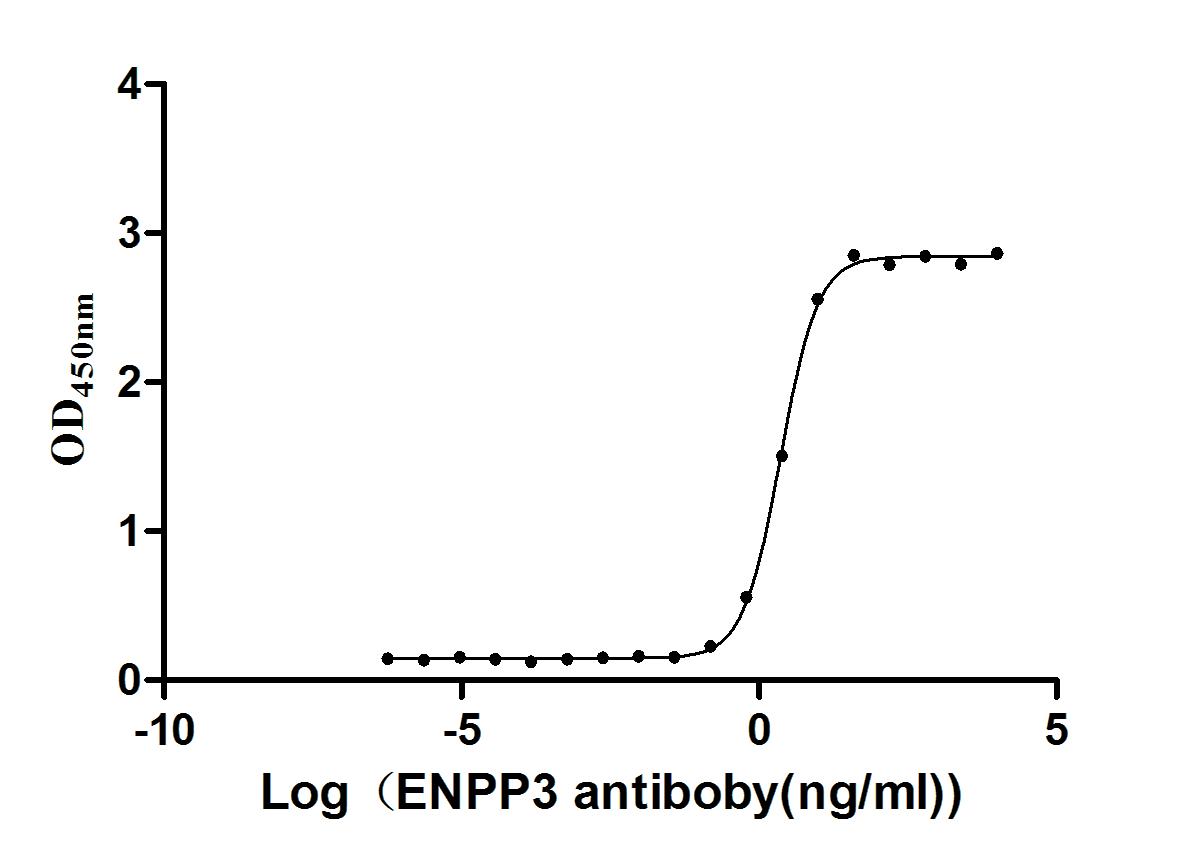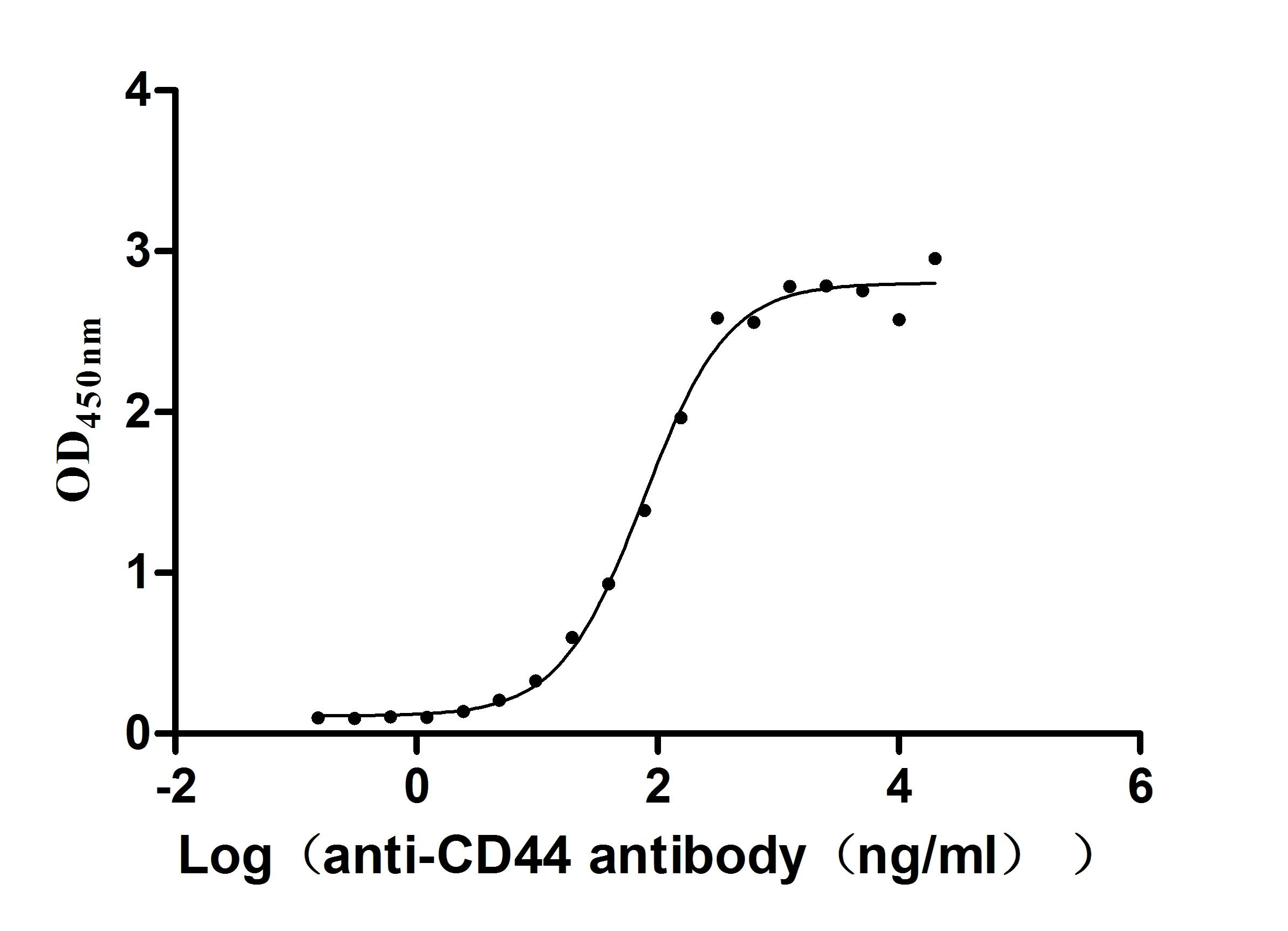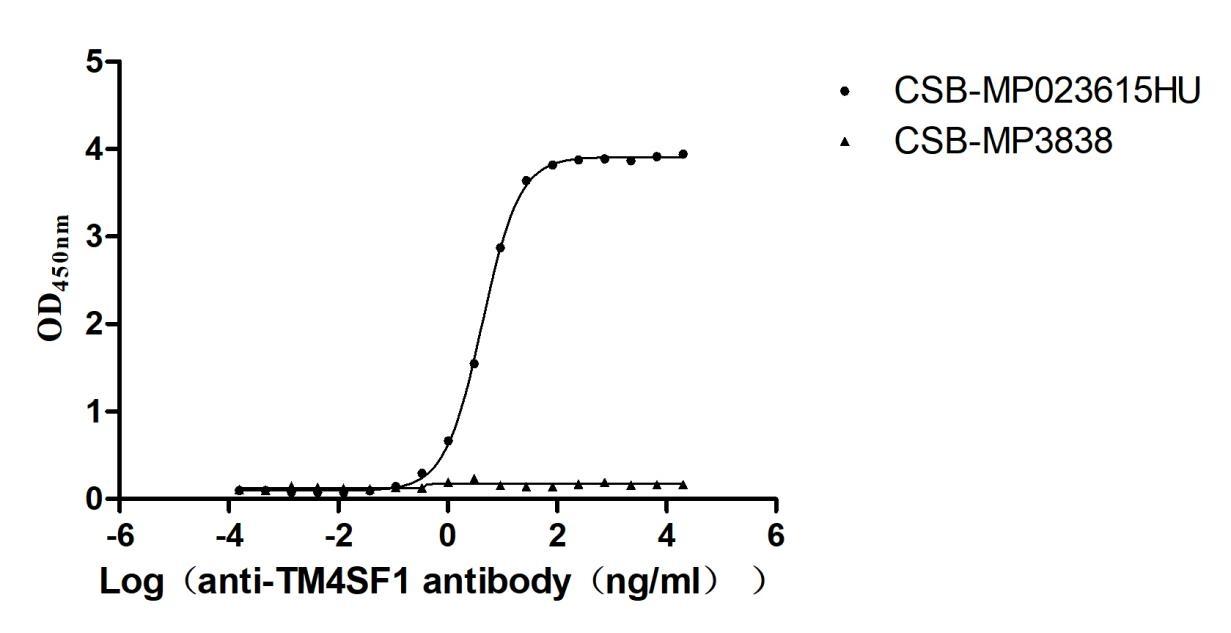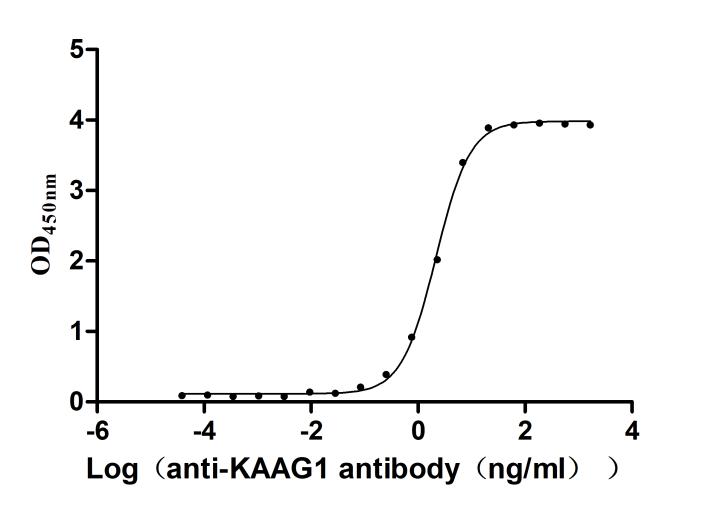Recombinant Human Ecto-NOX disulfide-thiol exchanger 2 (ENOX2)
-
中文名稱:人ENOX2重組蛋白
-
貨號(hào):CSB-YP007677HU
-
規(guī)格:
-
來(lái)源:Yeast
-
其他:
-
中文名稱:人ENOX2重組蛋白
-
貨號(hào):CSB-EP007677HU
-
規(guī)格:
-
來(lái)源:E.coli
-
其他:
-
中文名稱:人ENOX2重組蛋白
-
貨號(hào):CSB-EP007677HU-B
-
規(guī)格:
-
來(lái)源:E.coli
-
共軛:Avi-tag Biotinylated
E. coli biotin ligase (BirA) is highly specific in covalently attaching biotin to the 15 amino acid AviTag peptide. This recombinant protein was biotinylated in vivo by AviTag-BirA technology, which method is BriA catalyzes amide linkage between the biotin and the specific lysine of the AviTag.
-
其他:
-
中文名稱:人ENOX2重組蛋白
-
貨號(hào):CSB-BP007677HU
-
規(guī)格:
-
來(lái)源:Baculovirus
-
其他:
-
中文名稱:人ENOX2重組蛋白
-
貨號(hào):CSB-MP007677HU
-
規(guī)格:
-
來(lái)源:Mammalian cell
-
其他:
產(chǎn)品詳情
-
純度:>85% (SDS-PAGE)
-
基因名:ENOX2
-
Uniprot No.:
-
別名:APK1; APK1 antigen; COVA1; Cytosolic ovarian carcinoma antigen 1; Ecto NOX disulfide thiol exchanger 2; ENOX 2; ENOX2; ENOX2_HUMAN; OTTHUMP00000024021; OTTHUMP00000024022; Protein disulfide-thiol oxidoreductase; tNOX; Tumor associated hydroquinone oxidase; Tumor-associated hydroquinone oxidase
-
種屬:Homo sapiens (Human)
-
蛋白長(zhǎng)度:full length protein
-
表達(dá)區(qū)域:1-610
-
氨基酸序列MQRDFRWLWV YEIGYAADNS RTLNVDSTAM TLPMSDPTAW ATAMNNLGMA PLGIAGQPIL PDFDPALGMM TGIPPITPMM PGLGIVPPPI PPDMPVVKEI IHCKSCTLFP PNPNLPPPAT RERPPGCKTV FVGGLPENGT EQIIVEVFEQ CGEIIAIRKS KKNFCHIRFA EEYMVDKALY LSGYRIRLGS STDKKDTGRL HVDFAQARDD LYEWECKQRM LAREERHRRR MEEERLRPPS PPPVVHYSDH ECSIVAEKLK DDSKFSEAVQ TLLTWIERGE VNRRSANNFY SMIQSANSHV RRLVNEKAAH EKDMEEAKEK FKQALSGILI QFEQIVAVYH SASKQKAWDH FTKAQRKNIS VWCKQAEEIR NIHNDELMGI RREEEMEMSD DEIEEMTETK ETEESALVSQ AEALKEENDS LRWQLDAYRN EVELLKQEQG KVHREDDPNK EQQLKLLQQA LQGMQQHLLK VQEEYKKKEA ELEKLKDDKL QVEKMLENLK EKESCASRLC ASNQDSEYPL EKTMNSSPIK SEREALLVGI ISTFLHVHPF GASIEYICSY LHRLDNKICT SDVECLMGRL QHTFKQEMTG VGASLEKRWK FCGFEGLKLT
-
蛋白標(biāo)簽:Tag?type?will?be?determined?during?the?manufacturing?process.
The tag type will be determined during production process. If you have specified tag type, please tell us and we will develop the specified tag preferentially. -
產(chǎn)品提供形式:Lyophilized powder
Note: We will preferentially ship the format that we have in stock, however, if you have any special requirement for the format, please remark your requirement when placing the order, we will prepare according to your demand. -
復(fù)溶:We recommend that this vial be briefly centrifuged prior to opening to bring the contents to the bottom. Please reconstitute protein in deionized sterile water to a concentration of 0.1-1.0 mg/mL.We recommend to add 5-50% of glycerol (final concentration) and aliquot for long-term storage at -20℃/-80℃. Our default final concentration of glycerol is 50%. Customers could use it as reference.
-
儲(chǔ)存條件:Store at -20°C/-80°C upon receipt, aliquoting is necessary for mutiple use. Avoid repeated freeze-thaw cycles.
-
保質(zhì)期:The shelf life is related to many factors, storage state, buffer ingredients, storage temperature and the stability of the protein itself.
Generally, the shelf life of liquid form is 6 months at -20°C/-80°C. The shelf life of lyophilized form is 12 months at -20°C/-80°C. -
貨期:Delivery time may differ from different purchasing way or location, please kindly consult your local distributors for specific delivery time.Note: All of our proteins are default shipped with normal blue ice packs, if you request to ship with dry ice, please communicate with us in advance and extra fees will be charged.
-
注意事項(xiàng):Repeated freezing and thawing is not recommended. Store working aliquots at 4°C for up to one week.
-
Datasheet :Please contact us to get it.
相關(guān)產(chǎn)品
靶點(diǎn)詳情
-
功能:May be involved in cell growth. Probably acts as a terminal oxidase of plasma electron transport from cytosolic NAD(P)H via hydroquinones to acceptors at the cell surface. Hydroquinone oxidase activity alternates with a protein disulfide-thiol interchange/oxidoreductase activity which may control physical membrane displacements associated with vesicle budding or cell enlargement. The activities oscillate with a period length of 22 minutes and play a role in control of the ultradian cellular biological clock.
-
基因功能參考文獻(xiàn):
- The tumor-associated NADH oxidase (tNOX)-mediated modulation of the NAD+ concentration and SIRT1 are involved in oxaliplatin-induced apoptosis. PMID: 28122359
- These findings not only shed light on the molecular mechanism of the anticancer properties of capsaicin, but also the transcription regulation of tNOX expression that may potentially explain how POU3F2 is associated with tumorigenesis. PMID: 27271588
- The findings support a role for arNOX as a major source of oxidative damage leading to cross-linking of skin proteins. PMID: 24906676
- The results suggest that phosphorylation of serine-504 by PKCdelta modulates the biological function of tNOX. PMID: 22659163
- this result suggests that hnRNP F directs formation of the exon 4 minus variant of ENOX2. PMID: 21625959
- increased NADH levels resulting from ENOX2 inhibition result in decreased prosurvival sphingosine-1-phosphate and increased proapoptotic ceramide, both of which may be important to initiation of the ENOX2 inhibitor-induced apoptotic cascade. PMID: 21571040
- ENOX2 is a dimeric protein containing 4 coppers/dimer capable of carrying out concerted four electron transfers from NADH or ubiquinol to molecular oxygen as required to form water. PMID: 20922471
- arNOX activity correlates with age and reaches a maximum at about age 65 in males and 55 in females. PMID: 20345278
- Enhanced arNOX activity correlates with age and with oxidative changes contributing to skin aging. PMID: 19734125
- tNOX is both necessary and sufficient for the cellular anticancer activities attributed to both EGCg and capsaicin. *tNOX enzyme PMID: 15706060
- results indicate that shRNA targeting of tNOX inhibits the growth of cervical cancer cells, and reduces cell migration via a decrease in the membrane association of Rac. PMID: 18023414
- A relationship of tNOX to unregulated growth of cancer cells was provided by data where growth of HeLa cells was inhibited by transfection with the exon 5 antisense oligonucleotides PMID: 18351130
- These results indicate that tNOX is suppressed during apoptosis and demonstrate that tNOX down-regulation sensitizes cells to stress-induced growth reduction, suggesting that tNOX is required for transformed cell growth. PMID: 18789934
顯示更多
收起更多
-
亞細(xì)胞定位:Cell membrane. Secreted, extracellular space. Note=Extracellular and plasma membrane-associated.
-
蛋白家族:ENOX family
-
組織特異性:Found in the sera of cancer patients with a wide variety of cancers including breast, prostate, lung and ovarian cancers, leukemias, and lymphomas. Not found in the serum of healthy volunteers or patients with disorders other than cancer. Probably shed in
-
數(shù)據(jù)庫(kù)鏈接:
Most popular with customers
-
Recombinant Human Receptor tyrosine-protein kinase erbB-3 (ERBB3), partial (Active)
Express system: Mammalian cell
Species: Homo sapiens (Human)
-
Express system: Mammalian cell
Species: Homo sapiens (Human)
-
Recombinant Macaca fascicularis CD44 antigen (CD44), partial (Active)
Express system: Mammalian cell
Species: Macaca fascicularis (Crab-eating macaque) (Cynomolgus monkey)
-
Recombinant Human Claudin-6 (CLDN6)-VLPs, Fluorescent (Active)
Express system: Mammalian cell
Species: Homo sapiens (Human)
-
Recombinant Human Myosin regulatory light polypeptide 9 (MYL9) (Active)
Express system: Yeast
Species: Homo sapiens (Human)
-
Recombinant Human Transmembrane 4 L6 family member 1(TM4SF1)-VLPs (Active)
Express system: Mammalian cell
Species: Homo sapiens (Human)
-
Recombinant Human Kidney-associated antigen 1(KAAG1) (Active)
Express system: E.coli
Species: Homo sapiens (Human)





f4-AC1.jpg)













